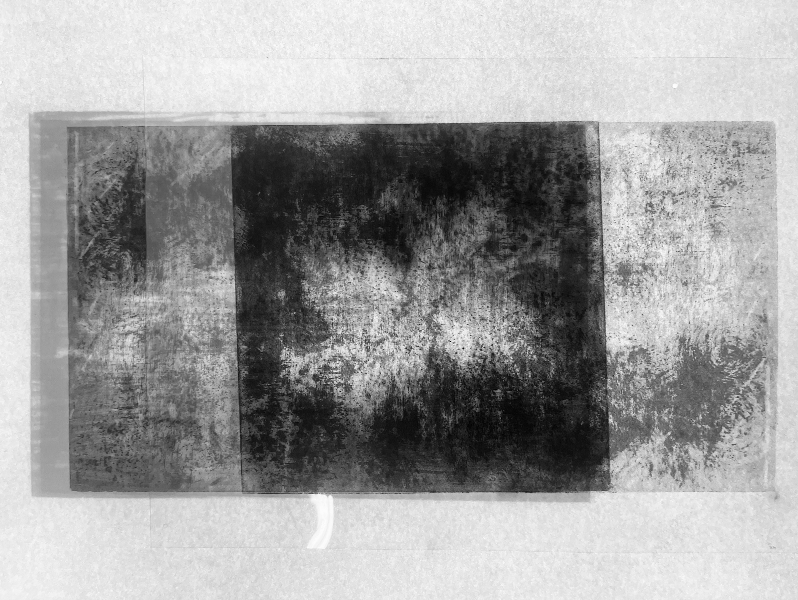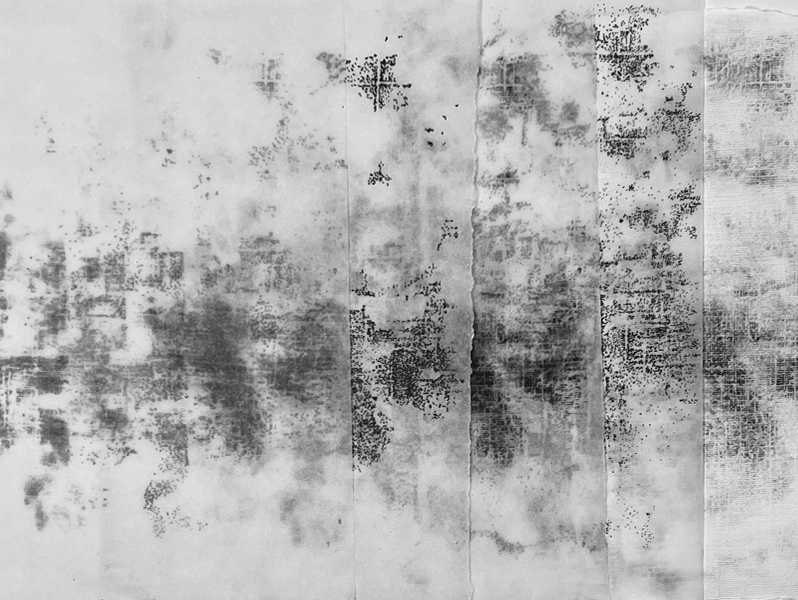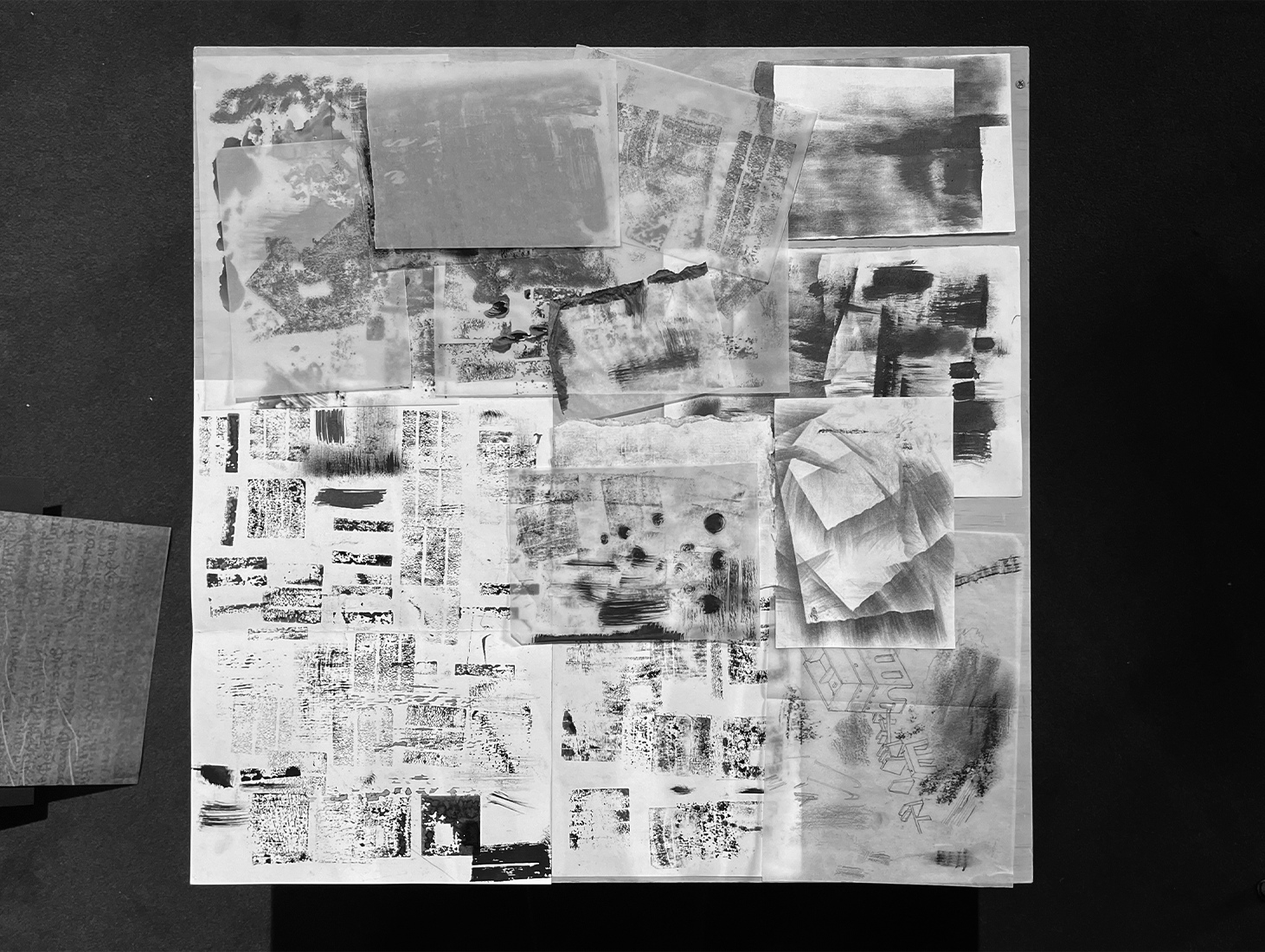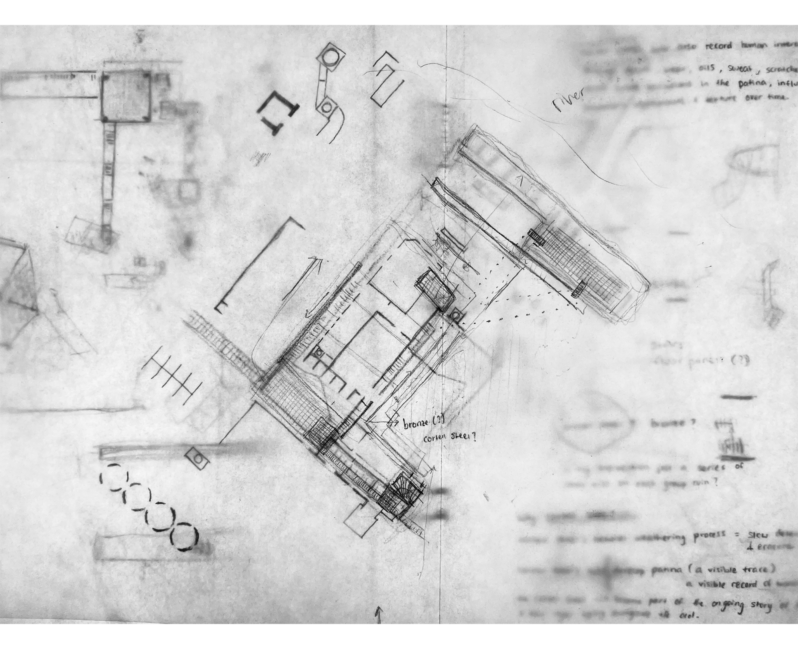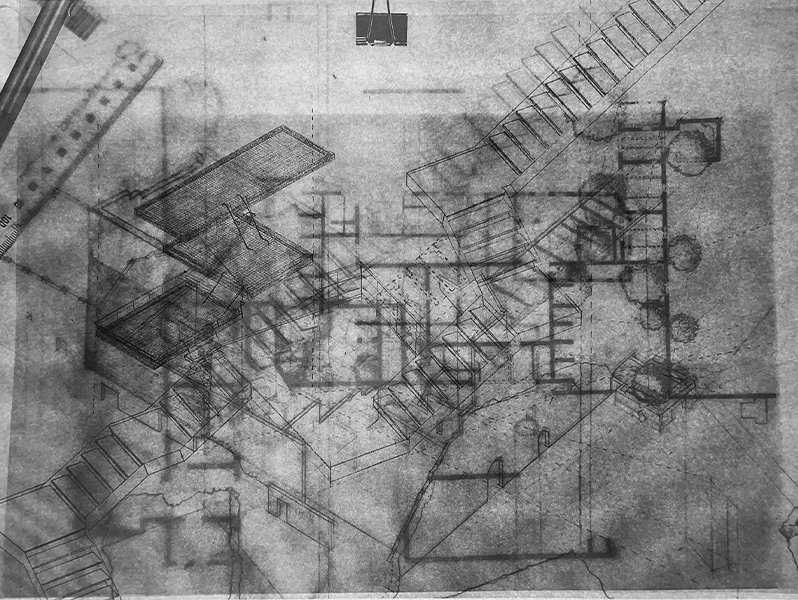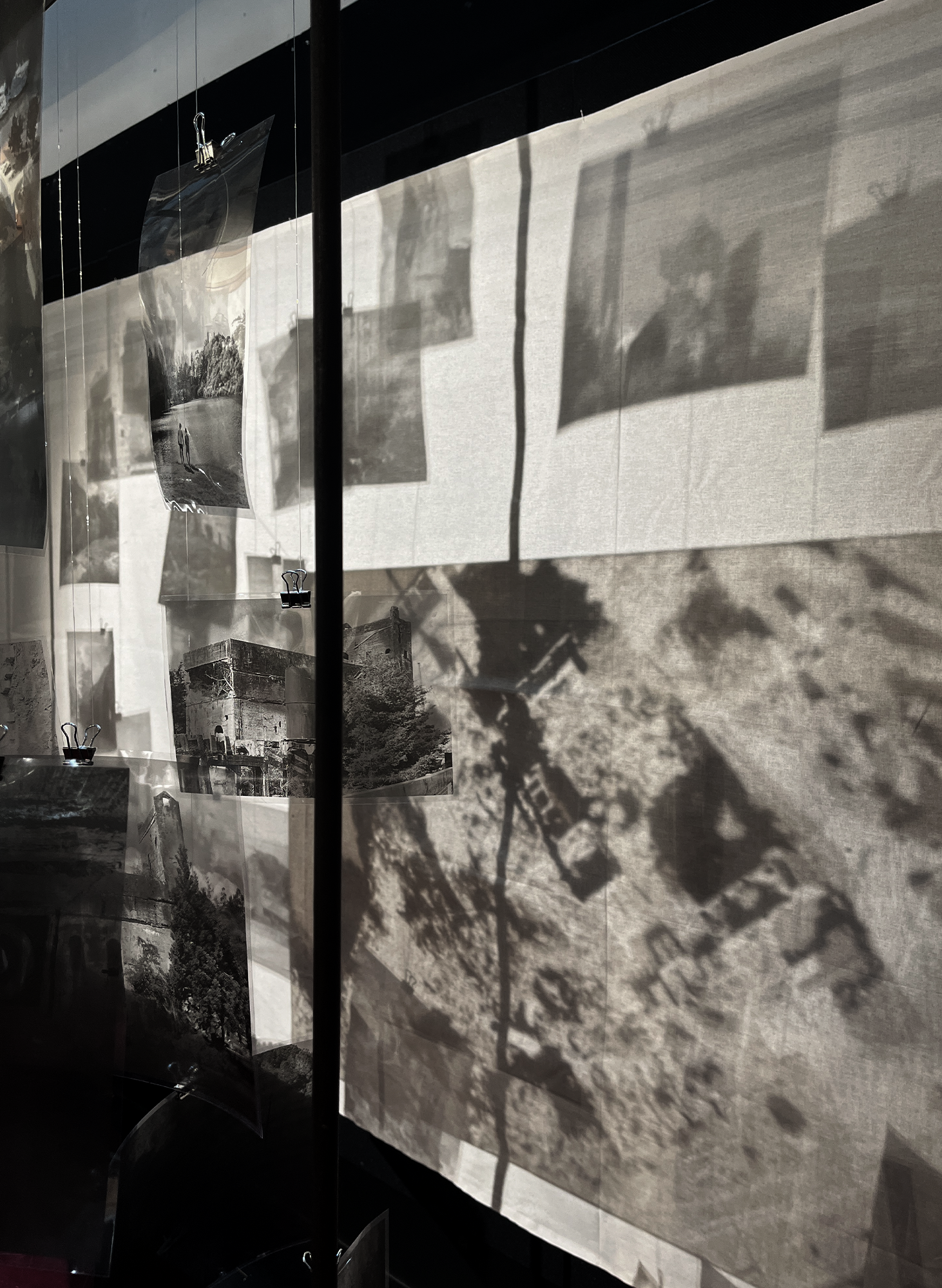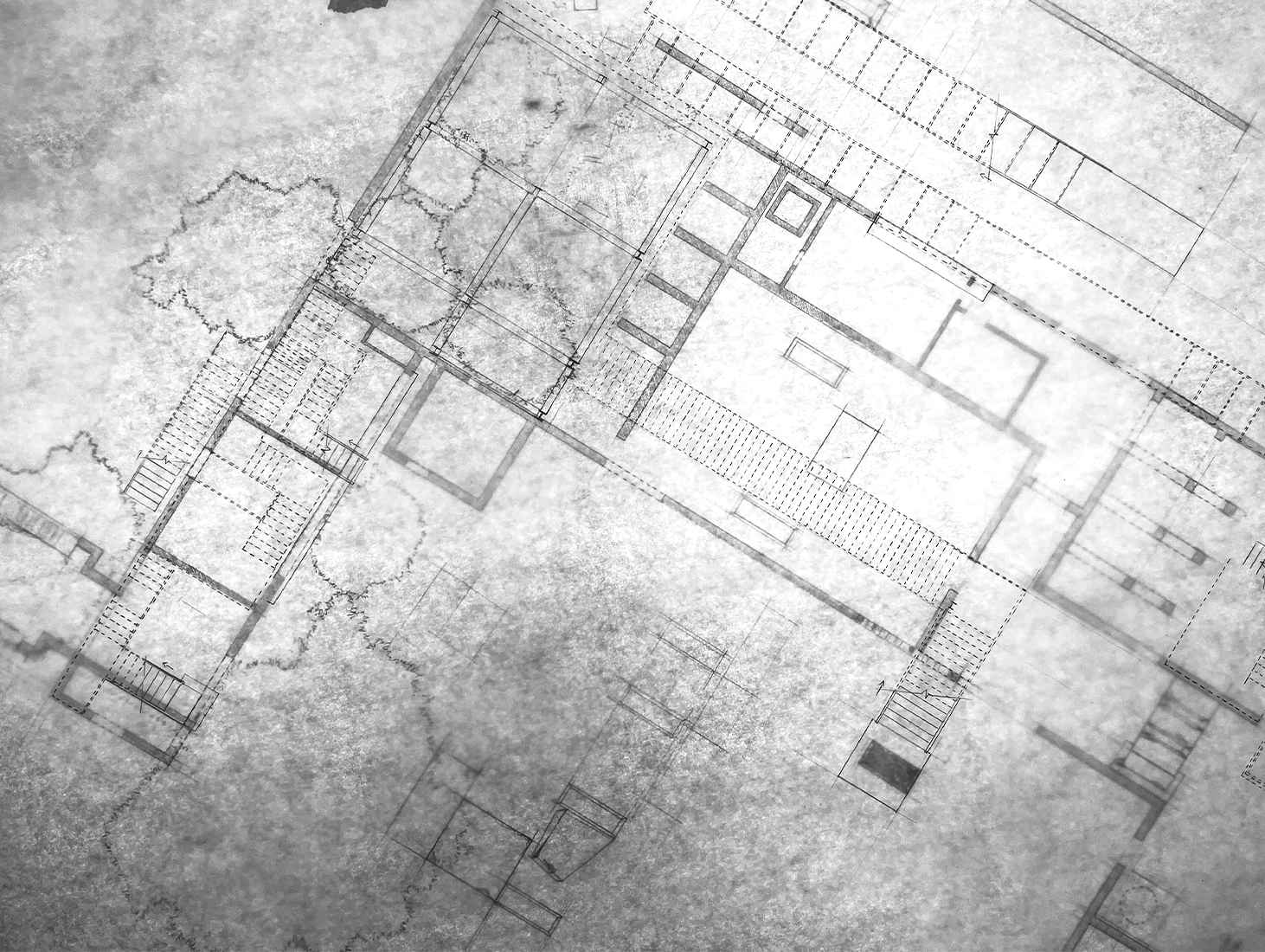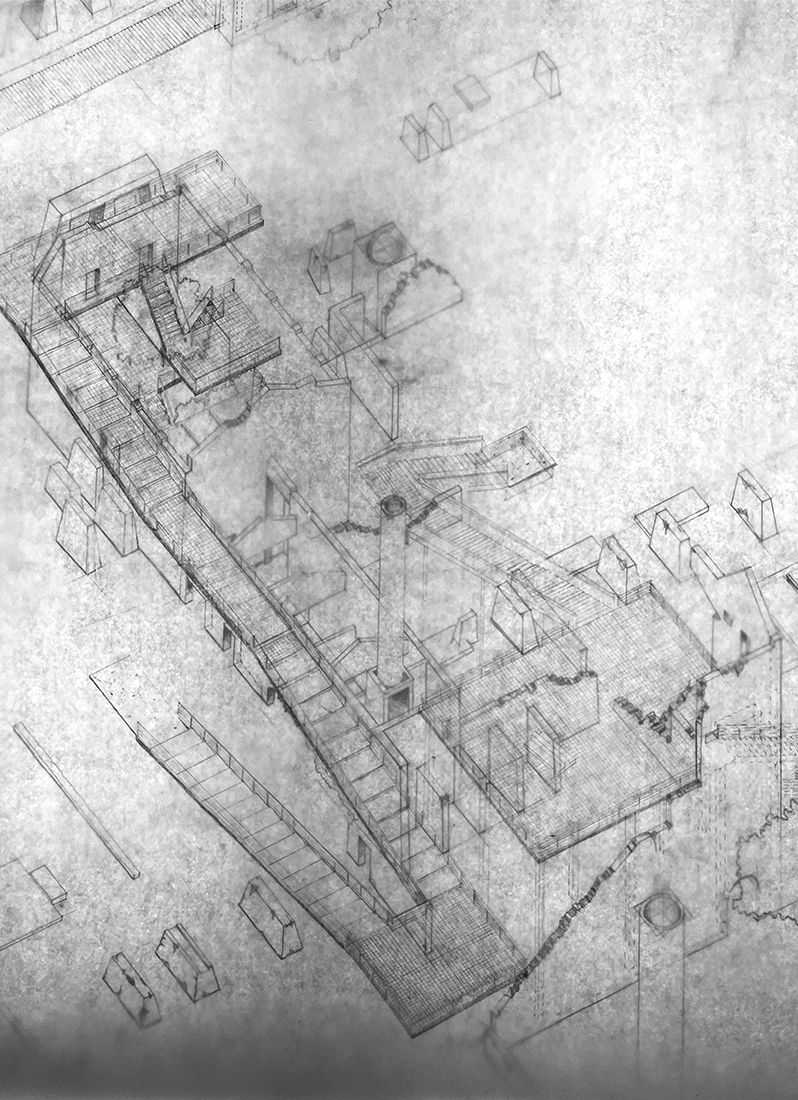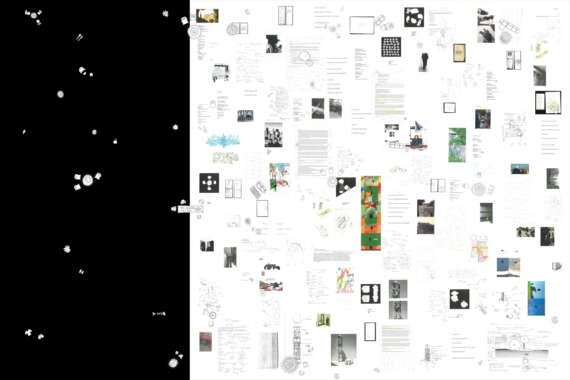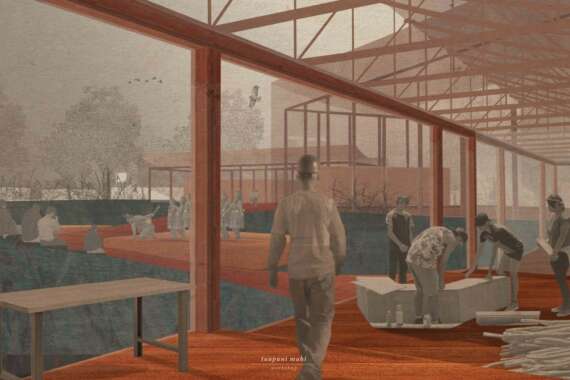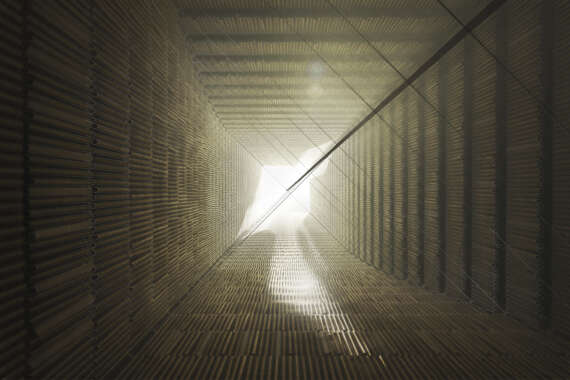Palimpsestuous : Layered Narrative
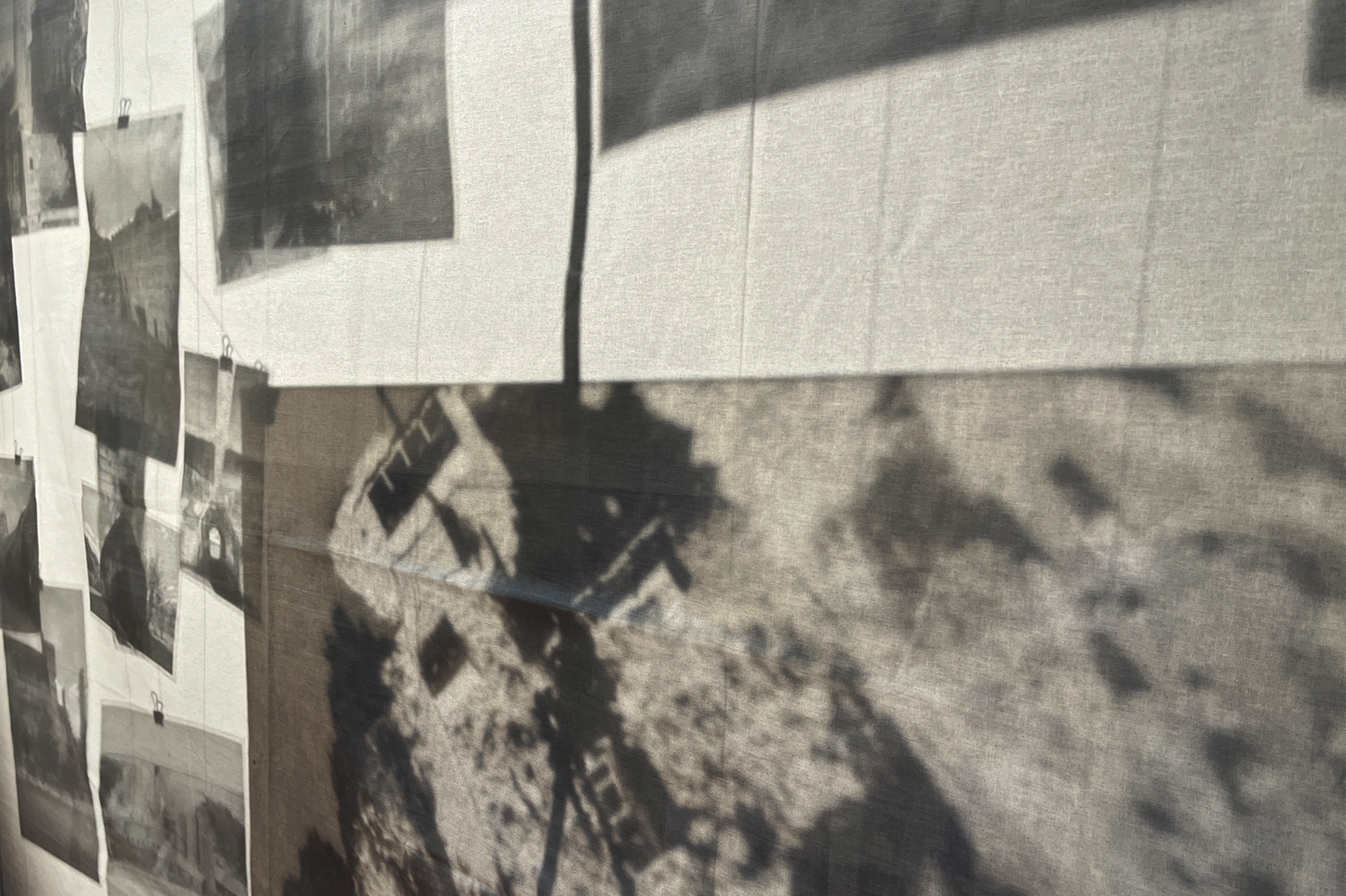
Architectural practice has seen iterations and continual changes, accumulating layers of ideas and uncertainties into stacked documents that hold memories or fragments of built reality of a project. Mirroring the nature of a palimpsest—a writing piece reused over time, leaving traces of its earlier drawings and writings despite its erasure—this process reflects the layered narrative of architectural practice.
Layered Narrative explores this iterative process, valuing the richness of layered ideas. Through series of makings and research, this thesis examines the palimpsestic nature of architectural practice and its embodiment within a project.
Set in the Mahurangi Cement Ruins, a site shaped by human demolition and natural degradation, this project views ruins as living documents—palimpsests of survival that record traces of memory, erasure, interaction and transformation over time. The new layer installed within this site serves as a medium, inviting people to leave their marks and traces, fostering a continued dialogue between the past and present, weaving a layered history of engagement between the people, nature and the ruins.







